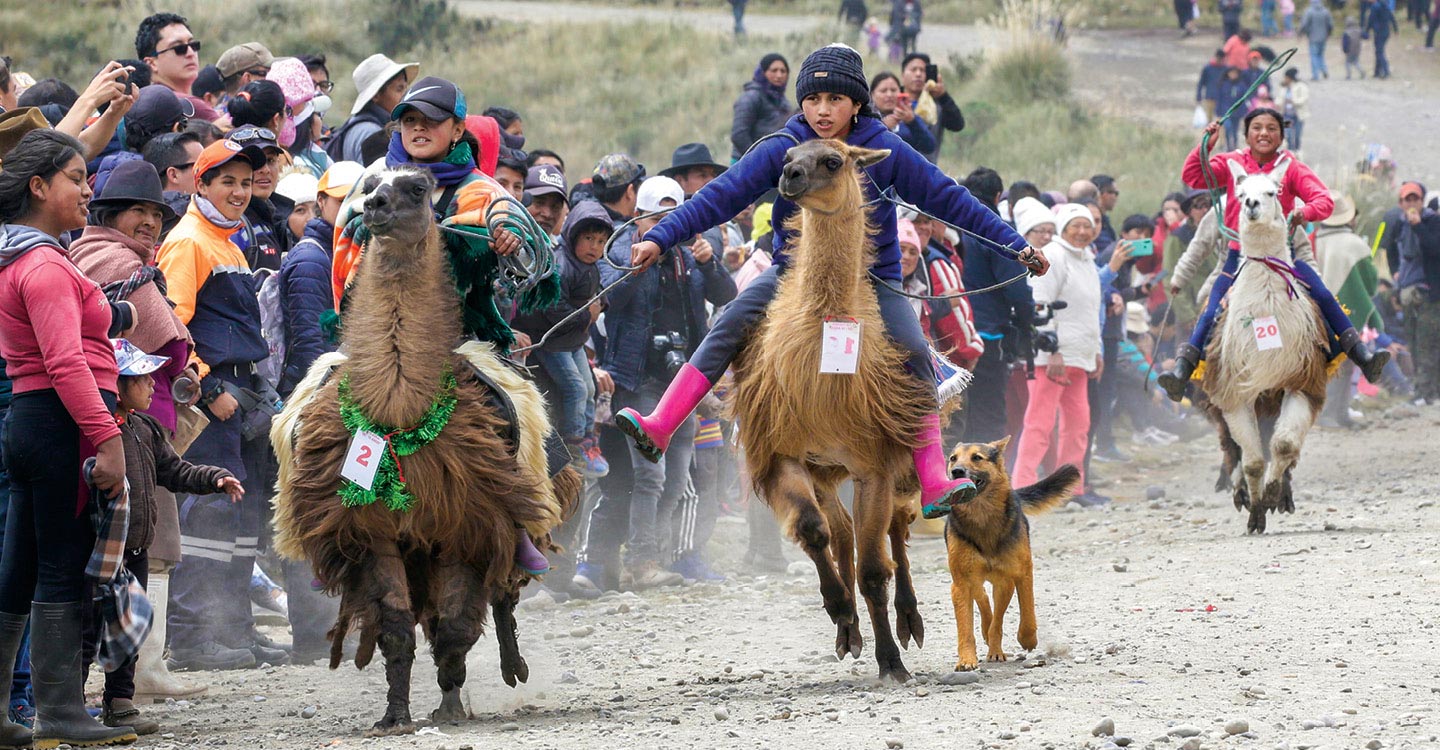Jim McMahon
For the indigenous people of Ecuador’s highlands, llama racing is a rite of passage. In February, about 20 kids ages 4 to 12 dressed up in ponchos and riding pants (called zamarros) and gathered at Llanganates National Park for a competition known as Llamingada. Llamas are important to the community, as they’re often used to transport goods or help in the fields. And their padded feet allow them to cross through the area’s 850 square miles of wetlands without causing damage, unlike other animals. The goal of the annual race is to raise awareness among indigenous people about the park, which is home to roughly 300 lagoons and cloud forests and has been recognized by the United Nations as a vital habitat for waterfowl. That’s why many of the young racers feel strongly about protecting the land. “I am calling on people to look after the environment,” 10-year-old winner Dayana Toapanta told Reuters, “and not to burn nature.”

